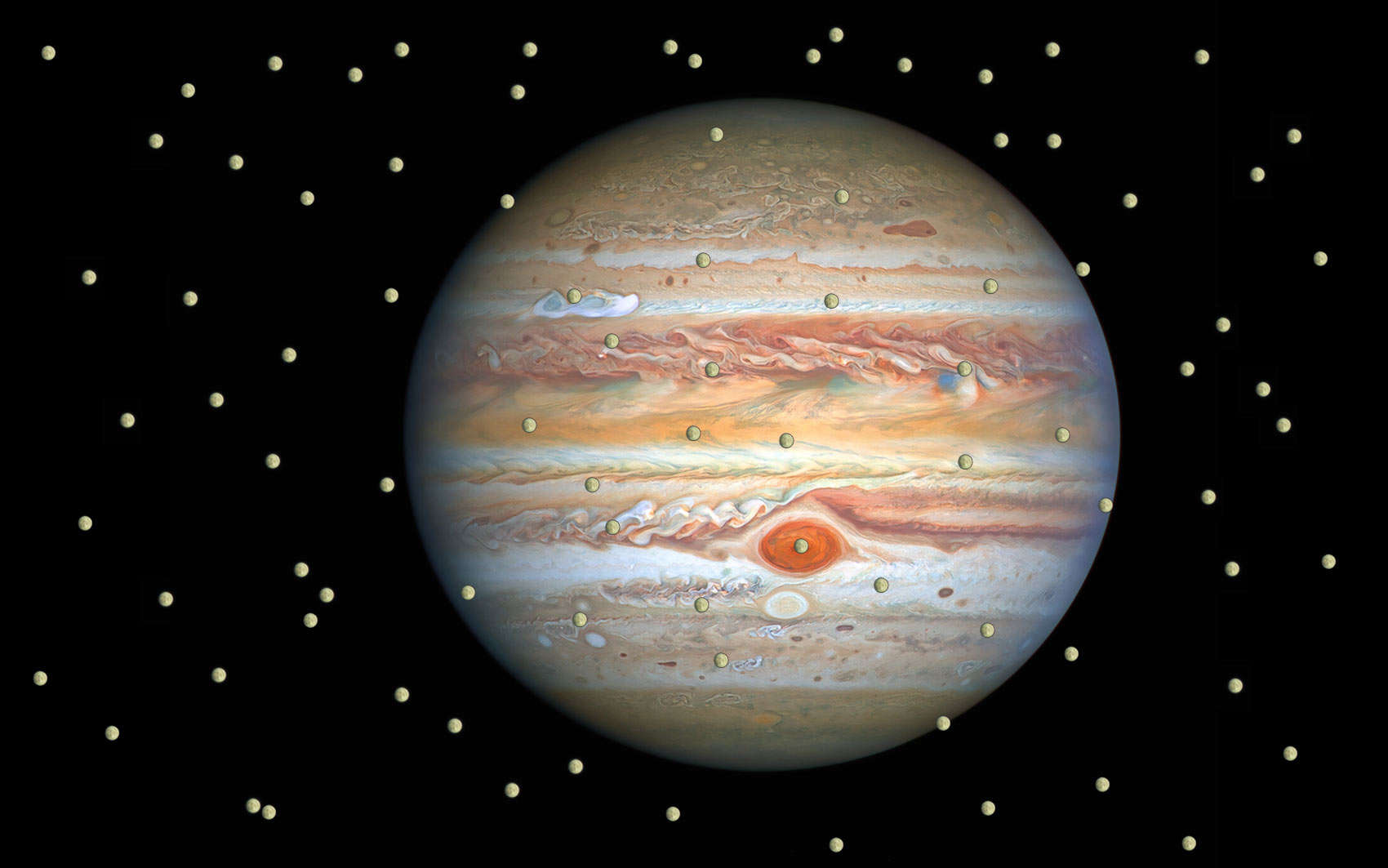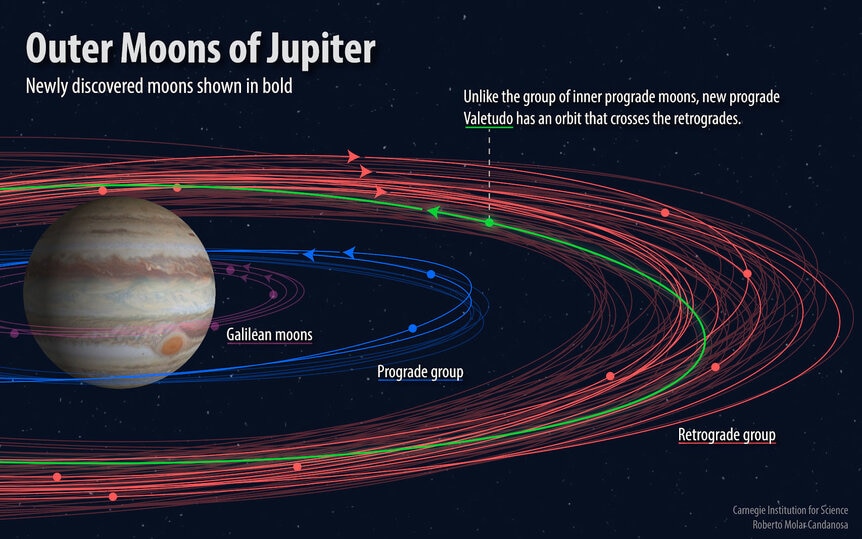Create a free profile to get unlimited access to exclusive videos, sweepstakes, and more!
Wait. Jupiter has *how* many moons?

At the moment, Jupiter has 79 moons.
By that I mean 79 that we know of, including a dozen just found recently. But how many are there in total?
The question is hard to answer as is. For one thing, how small a thing do you call a moon? If, say, something the size of Baby Yoda orbited Jupiter, I wouldn’t call it a moon*. But something a kilometer across? Sure.
The other issue is that as objects get smaller they get fainter. Jupiter orbits the Sun 5 times farther than the Earth does, so at best we’re about 600 million kilometers from it, and at worst about 900 million. That’s far enough away that looking for objects in the kilometer size range gets pretty tough.
A new study looked at some images taken of Jupiter back in 2010, and using a clever method the astronomers were able to dig deep to look for faint moons orbiting the giant planet. Cutting to the chase, they found 52 objects that fit their criteria. Seven of those were already known, so it looks like they found 45 potentially new ones.
That’s pretty cool, but they go further than that. By understanding how many moons they might have missed they find that Jupiter could have 600 moons that are 800 meters wide or bigger.
Within a factor of 2. So maybe 300 or maybe 1,200. Either way, wow! That’s a lot of moons.
The images they looked at were taken using the Canada French Hawaii Telescope, a 3.6-meter ‘scope on Mauna Kea. The observations were originally made in 2010 to look for a moon that had been seen before but lost over time… and which was eventually recovered.
They took 60 images of 140 seconds each, covering an area of the sky about a degree across (so, twice the width of the full Moon on the sky) near Jupiter, about 1.5° away from it.
Over that course of time, Jupiter’s orbital motion means it moves a bit in between exposures. The moons will tag along with it, so one way you can find them is to simply look for blips of light that move at the right rate (some will move too quickly because they’re actually asteroids in the main belt closer to Earth, and some will move too slowly, because they’re farther out).
But the astronomers who did the new reanalysis of the images took a different approach. They figured that the moons will be orbiting Jupiter themselves during the exposures, probably in different directions and at different rates. So, assuming that direction and rate, they can take the exposures and shift them as if they were tracing those moons. When they add the images all together they can see fainter objects than in individual ones (it’s like taking a longer exposure), which will pop up in the final stacked image.
The thing is, you don’t know what rates and directions they’ll have, so they had to do a whole bunch of them to see what they get… and then they had to search for those moons by eye. It’s a daunting task.
And a complicated one, as you can imagine, but that’s the nuts and bolts of it. And when they were done, they found those 45 new moons (and 7 previously known ones). Knowing how much of the sky around Jupiter they covered, and how many they’d miss for various reasons, they came up with their estimate of 600 moons that are 0.8 km wide or larger.
Confirming that will be difficult. They could use a bigger telescope and take more images, but they’d all have to be over a single night, or else the moons would move too much to find. And Jupiter itself is so bright that it’s hard to look near it, so you’ll miss some that way too. You’d have to do this several times over a year, and that’s a tall order.
Even going there with a space probe to look is hard. Some of these moons are more than 20 million kilometers from Jupiter! And you’d have to look over the whole sky to see them, since they’d be all around you. Again, pretty tough to do.
But it’s nice to have an estimate.
And that makes me wonder: Which planet has the most moons? But, like the question I started off with, that’s hard to answer, and for the same reasons. It depends on what you call a moon, and finding them is hard. Worse, some objects may be temporary moons, orbiting for a short time before the gravitational influences in the solar system nudge it away.
I’ll note that right now we know of 82 moons for Saturn, so it currently holds the record. It technically could have roughly as many moons as Jupiter does, or a few more; how well a planet can hold on to a moon depends on its mass and how far it is from the Sun (I wrote a more detailed explanation here if you want to dive into this idea a bit more).
In the end you find that a question like that doesn’t really have a great answer because the question is ill-posed, and you have to be more careful how you phrase it. We humans like to have neat, definite answers we can wrap up in a ribbon, but the Universe is very rarely like that.
It’s frustrating, maybe, but you get used to it. So, in this case, if you ask “How many moons does Jupiter have?” the safest answer is “hundreds, and maybe more.” Good enough.
*Obi Wan could point at it and say… well, something. Nothing comes to mind.





























